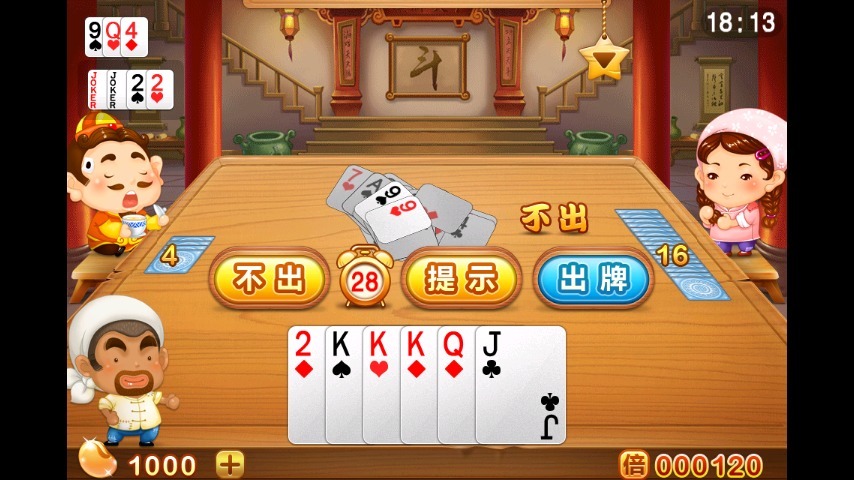Kuora: How to play the Chinese card game ‘Fight the Landlord’ (Dou Dizhu)

This week’s column is an introduction to one of China’s most popular card games. Admittedly, this is just one of several variations, but if you know the basics, you’ll be on your way to mastering it in no time. Originally posted to Quora on December 10, 2013.
What’s the best way to teach someone the Chinese card game “Fight the Landlord” (斗地主 dòu dìzhǔ)?
Here’s the simple version of the game that my nine-year-old daughter taught me, so I’m not 100% sure of its accuracy.
Start with a deck including the two jokers. Each player will start with 14 cards, so find the jokers, then include 26 additional cards for two players, 40 additional cards for three players, and all 54 for four players (in which two players will have only 13 cards). Shuffle jokers and additional cards in and deal clockwise.
The goal of the game is to get rid of all your cards. Value of the cards in order, highest to lowest:
Red joker
Black joker
2
Ace
King
Queen
Jack
10
9 down to 3
Players examine their deck and strategize on how they’re going to best get rid of their decks. One person calls “landlord” if they believe they have a strong enough hand to beat everyone else. The others become “peasants” and are collectively trying to beat the landlord. If any of them win, then their team wins.
To play, the first peasant to the dealer’s left puts out a card or cards. It can be a single card, a pair, three of a kind, four of a kind, or a straight made up of five or more consecutive cards of any suit. Note that straights cannot start below 3 (i.e., it can’t go 2-3-4-5-6), and it can’t extend beyond Ace (i.e., it can’t go J-Q-K-A-2).
The next player must top that last card. For example, if the first player plays two sixes, the next must be at least two sevens. It can only be a pair, though; three sevens is not acceptable. A straight can be beaten by a sequential straight beginning with a higher value, same number of cards or greater.
Editor’s Note: I enjoyed a version in which the minimum number of cards required for a sequence was only three. Anyway, some people play a version in which suits matter, i.e., a straight of the same suit will beat any straight in which multiple suits are involved; so, 3-4-5-6-7 of all clubs could even beat 10-J-Q-K-A.
Another common rule is that four-of-a-kinds (e.g., 6-6-6-6) function as “bombs,” essentially a trump that can be dropped — or slammed down, emphatically, as it usually were — on any configuration, beating out even the rare and delightful 12-card straight (3-4-5-6-7-8-9-10-J-Q-K-A).
First player to dispense with all cards wins. There’s also some scoring system that I’ve not yet learned. Play with your Chinese friends, they’ll know all sorts of fun variations, or check out this site.
What rules or rule variations do you enjoy best? Let us know!
Kuora is a weekly column.






